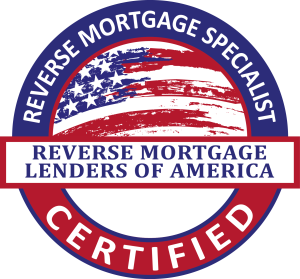
Reverse Mortgage Myths | The Truth about Reverse Mortgages
Reverse mortgage myths are very common. Reverse mortgages are different than a traditional forward mortgage, therefore many people are afraid of them. Few people have studied the benefits and the guidelines but are quick to dismiss what they don’t understand. My name is Richard Woodward, and I am a certified reverse mortgage specialist. I’m going to give you the truth about reverse mortgages.
In 2017 HUD made sweeping changes to the government insured reverse mortgage program. These changes were designed to enhance the program and reduce the number of foreclosures. I like to call these improvements the beginning of The New Reverse Mortgage Program. In years past, borrowers were able to access considerably more equity at the beginning of the loan. This caused a negative equity situation very quickly, especially in a down market. Under the new guidelines, borrowers can access much less of their equity which makes it highly unlikely that borrowers will experience negative equity.
1. A reverse mortgage sells the home to the bank
The number one myth about reverse mortgages is that the borrower is giving your house to the bank. That is completely untrue. Banks do not want to own property, they want to earn interest. Foreclosing on the property cost money and time and lost interest. Under the New Reverse Mortgage, borrowers are taking out a mortgage very similar to the traditional forward. You are just giving your home as collateral for a loan. The loan simply needs to be paid back. The requirement to pay back the loan is triggered when the borrower permanently leaves the home for more than 12 months or passes away.
2. Heirs will not inherit the home
The second most common myth is that the heirs will not inherit the home. This is completely untrue as well. Just like in the case of a traditional mortgage, the borrower’s estate is in control of the home. The heirs simply need to refinance the loan into their names, pay off the current loan, or sell home and keep any equity.
For example, let’s assume the borrower owes $100,000 at the time of death. The home is worth 300,000, and the borrowers are not interested in keeping the home. They would put the home up for sale. If the home sales for $300,000, the heirs will keep $200,000 minus any cost to sell the home.
Under the new reverse mortgage guidelines established by FHA, the borrower or the borrower’s estate will never hold more than 95% of the HUD authorized appraisers value. So in the event that the loan balance does increase beyond the home’s value, the FHA mortgage insurance program within any deficiency and the estate nor the borrower would be liable for any balance beyond that amount. This is called the nonrecourse feature of the HECM program.
3. The homeowner could get forced out of the home
The third most common myth about reverse mortgages is that the homeowner will be forced to leave the home at some point. This is completely untrue for as long as the borrower retains the home as their primary residence, stays in the home, pays the property taxes, homeowners insurance, any HOA dues, and maintains the property, they can never be forced to leave the home. This is guaranteed in writing in the loan documents.
4. Someone can outlive a reverse mortgage
The fourth most common myth is that the borrower can outlive the reverse mortgage. This is untrue as well as the borrower is entitled to stay in the property as long as they wish. However, there is a stipulation in the loan documents that makes the loan due when the borrower turns 150 years.















